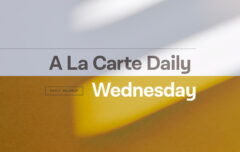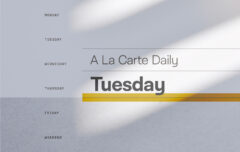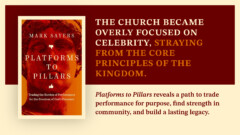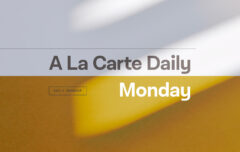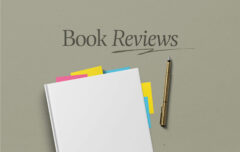It is Canada Day today and I’m taking the day off. My kids have been begging go to a ball game so a bit later on I’ll be taking them to see the Jays play the Rays. It seemed that on Canada Day it would make sense to write a little bit about Canada’s national anthem.
Canada may be unique as a nation that has two official national anthems. I was too lazy to do the legwork to find if there are any other nations with two, but I suspect there are not. To add to the strangeness, both of Canada’s anthems are entitled “O Canada.” Many people erroneously spell “O” as “Oh.” In reality the “O” is used as a vocative to apostrophize Canada and rather than as an exclamation. But most people prefer it as an exclamation.
O Canada was proclaimed to be Canada’s official anthem on July 1, 1980 (July 1 being Canada Day). Yet it was first sung almost exactly 100 years earlier. The music was composed by Calixa Lavallée who at that time was a well-known composer. But, as we know, popularity is fleeting and I’d guess you do not have any of his albums in your collection. The lyrics were written in French. Though it was well received on the occasion it was first performed, it had little immediate impact beyond that evening. Here is the song as it was first composed. For those who do not speak French, I’ve included a rough English translation:
Ô Canada ! Terre de nos aïeux,
Ton front est ceint de fleurons glorieux !
Car ton bras sait porter l’épée,
Il sait porter la croix;
Ton histoire est une épopée
Des plus brillants exploits.
Et ta valeur de foi trempée
Protégera nos foyers et nos droits;
Protégera nos foyers et nos droits.
O Canada! Home of our ancestors,
Your brow is wreathed with glorious garlands!
Just as your arm knows how to wield the sword,
It also knows how to bear the cross;
Your history is an epic
Of the most brilliant feats.
And your valour steeped in faith
Will protect our homes and our rights;
Will protect our homes and our rights.
In 1908, Dr. Thomas Bedford Richardson, a Toronto doctor, completed a translation into English. A quick look at the lyrics will show why we no longer use this particular version.
O Canada! Our fathers’ land of old
Thy brow is crown’d with leaves of red and gold.
Beneath the shade of the Holy Cross
Thy children own their birth
No stains thy glorious annals gloss
Since valour shield thy hearth.
Almighty God! On thee we call
Defend our rights, forfend this nation’s thrall,
Defend our rights, forfend this nation’s thrall.
“Forfend this nation’s thrall?” I’m sure God is eager and willing to do that, but I can’t recall the last time I used either “forfend” or “thrall”, which incidentally mean “ward off” and “slavery” or “bondage.”
That same year Robert Stanley Weir, a lawyer living in Montreal, penned another adaptation that eventually formed the basis for the song as we know it today.
O Canada! Our home and native land!
True patriot love thou dost in us command.
We see thee rising fair, dear land,
The True North, strong and free;
And stand on guard, O Canada,
We stand on guard for thee.
O Canada! O Canada!
O Canada! We stand on guard for thee.
O Canada! We stand on guard for thee.
The version that was official adopted in 1980 is quite similar.
O Canada!
Our home and native land!
True patriot love in all thy sons command.
With glowing hearts we see thee rise,
The True North strong and free!
From far and wide,
O Canada, we stand on guard for thee.
God keep our land glorious and free!
O Canada, we stand on guard for thee.
O Canada, we stand on guard for thee.
Thus we have two official national anthems, one written in French and one in English. It must be noted that the lyrics of these songs, even when translated to the same language, bear little resemblance to each other. Beyond the first two words there is little correlation in language or underlying themes. It is also interesting to note that while the songs are written in different languages, they were also written by men of different theological backgrounds. The English version is Protestant and emphasizes hard work and duty. The French version, written by a Roman Catholic, emphasizes history and national glory.
Today it is common for performances of the anthem to mix the French and English versions of the song. This leads to a rather interesting mixture of thoughts that actually makes the song seem quite militaristic.
O Canada! Our home and native land!
True patriot love in all thy sons command.
Just as your arm knows how to wield the sword,
It also knows how to bear the cross;
Your history is an epic
Of the most brilliant feats.
God keep our land glorious and free!
O Canada, we stand on guard for thee.
O Canada, we stand on guard for thee.
In recent years the song has come under attack from various parties who claim that the anthem is either sexist or too religious. Some have suggested removing the words “in all thy sons command” to “in all of us command.” Others have suggested ways of removing the references to God. So far these suggestions have met with resistance, but it is likely only a matter of time before the changes are made. After all, this is the nation that has legalized homosexual marriage and has decriminalized marijuana. We’re on the forefront of political correctness.
In How To Be A Canadian, Will and Ian Ferguson suggest that a defining characteristic of Canadians is that they do not know their own anthem. Certainly they do not loudly sing it with pride as do our American neighbours (as I noted last night when I was at the ball game–barely a person there bothered to sing along). “First lesson as a newcomer to Canada: Whatever you do, do not learn the words to ‘O Canada’! Nothing will mark you as an outsider more quickly. Canadians don’t know the words to their national anthem, and neither should you.”


